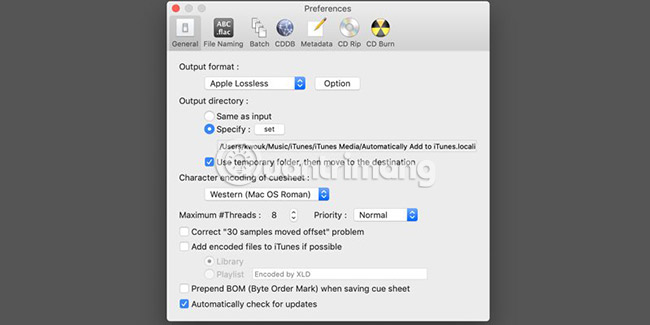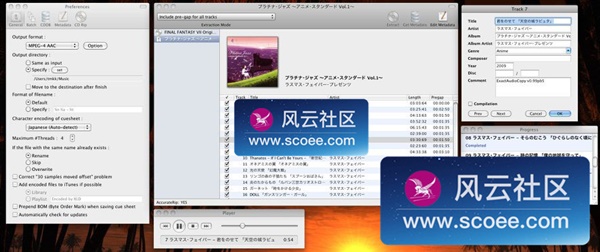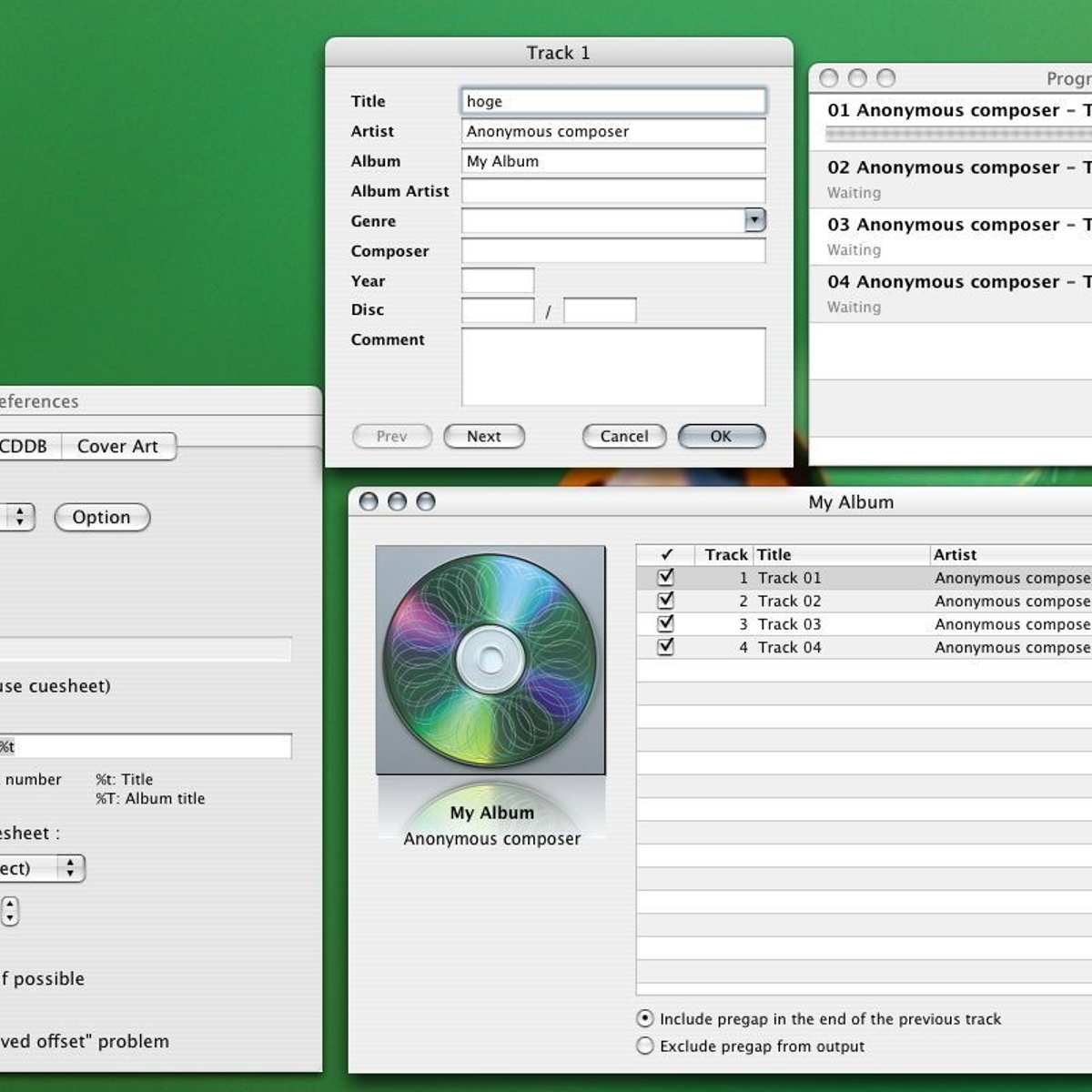All of these Pro Tools HD have already been cracked for windows I found link HERE Avid Pro Tools HD v10.3.10 MacOSX-OPENSSH 2.27GB. Pro tools 12.8 mac torrent.

Xylose Lysine Deoxycholate (XLD) Agar is a selective medium for the isolation of Salmonella and Shigella spp from clinical specimens and food samples. XLD Agar was originally formulated by Taylor for the isolation and identification of Shigella from stool specimens.
The pathogens are differentiated not only from the non-pathogenic lactose fermenters but also from many non-pathogens which do not ferment lactose or sucrose.
Here’s another vote for XLD. It’s very flexible, converting between FLAC and MP3, AAC, Apple Lossless, WAV & AIFF and more. There’s a bit of a learning curve, but you can find easy tutorials online. XACT is similar, and can sometimes work with files that XLD won’t convert for whatever reason (i run into this problem sometimes). X Lossless Decoder (also known as XLD) is a straightforward and minimalist macOS application that aims to provide you with all the tools needed to convert lossless audio files, and rip or burn CDs.
Additionally, the medium was formulated to increase the frequency of growth of the more fastidious pathogens, which in other formulations have often failed to grow due to the inclusion of excessively toxic inhibitors.
The results obtained in a number of clinical evaluations have supported the claim for the relatively high efficiency of XLD Agar in the primary isolation of Shigella and Salmonella. XLD Agar is included in the USP microbial limit test for screening specimens for the presence or absence of Salmonella and is recommended for the testing of foods, dairy products and water.
Principle of XLD Agar
XLD Agar is both a selective and differential medium. It contains yeast extract as a source of nutrients and vitamins. It utilizes sodium deoxycholate as the selective agent and, therefore, is inhibitory to gram-positive micro-organisms. Xylose is incorporated into the medium since it is fermented by practically all enterics except for the Shigella and this property enables the differentiation of Shigella species. Lysine is included to enable the Salmonella group to be differentiated from the non pathogens since without lysine, salmonellae rapidly would ferment the xylose and be indistinguishable from non-pathogenic species. After the salmonellae exhaust the supply of xylose, the lysine is attacked via the enzyme lysine decarboxylase, with reversion to an alkaline pH which mimics the Shigella reaction.
To prevent similar reversion by lysine positive coliforms, lactose and sucrose are added to produce acid in excess. Degradation of xylose, lactose and sucrose to acid causes phenol red indicator to change its colour to yellow. Bacteria that decarboxylate lysine to cadaverine can be recognized by the appearance of a red colouration around the colonies due to an increase in pH. These reactions can proceed simultaneously or successively, and this may cause the pH indicator to exhibit various shades of colour or it may change its colour from yellow to red on prolonged incubation.
To add to the differentiating ability of the formulation, an H2S indicator system, consisting of sodium thiosulfate and ferric ammonium citrate, is included for the visualization of the hydrogen sulfide produced, resulting in the formation of colonies with black centers. The non pathogenic H2S producers do not decarboxylate lysine; therefore, the acid reaction produced by them prevents the blackening of the colonies which takes place only at neutral or alkaline pH.
Uses of XLD Agar
Xld Mac 2020
- XLD Agar is a selective differential medium for the isolation of Gram-negative enteric pathogens from fecal specimens and other clinical material.
- It is especially suitable for the isolation of Shigella and Salmonella species.
- Microbiological testing of foods, water and dairy products.
Composition of XLD Agar
Ingredients per liter of deionized water (Hardy Diagnostics XLD Agar)
| Lactose | 7.5 gm |
| Sucrose | 7.5 gm |
| Sodium Thiosulfate | 6.8 gm |
| L-Lysine | 5.0 gm |
| Sodium Chloride | 5.0 gm |
| Xylose | 3.75 gm |
| Yeast Extract | 3.0 gm |
| Sodium Deoxycholate | 2.5 gm |
| Ferric Ammonium Citrate | 0.8 gm |
| Phenol Red | 0.08 gm |
| Agar | 15.0 gm |
Final pH 7.4 +/- 0.2 at 25 degrees C.


Preparation of XLD Agar
- Suspend 55 grams of dehydrated medium in 1000 ml purified or distilled water.
- Heat with frequent agitation until the medium boils.
Note: DO NOT AUTOCLAVE. - Transfer immediately to a water bath at 50°C.
- After cooling, pour into sterile Petri plates.
Note: It is advisable not to prepare large volumes, which will require prolonged heating and may produce precipitate.
Colony Characteristics of XLD Agar
- Degradation of xylose, lactose and sucrose generates acid products, causing a color change in the medium from red to yellow.
- Hydrogen sulfide production under alkaline conditions causes colonies to develop black centers. This reaction is inhibited by the acid conditions that accompany carbohydrate fermentation.
- Lysine decarboxylation in the absence of lactose and sucrose fermentation causes reversion to an alkaline condition and the color of the medium changes back to red.
Typical colonial morphology on XLD Agar are as follows:
Salmonella Typhi – Red Colonies, Black Centers
Salmonella choleraesuis – Red Colonies
Shigella sonnei – Red Colonies

Shigella flexneri – Red Colonies
Escherichia coli – Large, Flat, Yellow Colonies; some strains may be inhibited Huawei frp unlock tool bypass software fastboot.
Proteus vulgaris – Yellow Colonies
Enterobacter/ Klebsiella – Mucoid, Yellow Colonies
Pseudomonas aeruginosa – Pink, Flat, Rough Colonies
Gram-positive bacteria – No growth to slight growth Traxmaker 3 pro free.
Quality Control for XLD Agar
Limitations of XLD Agar
Xld Ripper
- Red, false-positive colonies may occur with some Proteus and Pseudomonas species.
- Incubation in excess of 48 hours may lead to false-positive results.
- S. paratyphi A, S. choleraesuis, S. pullorum and S. gallinarum may form red colonies without black centers, thus resembling Shigella species.
- Some Proteus strains will give black-centered colonies on XLD Agar.
- For identification, organisms must be in pure culture. Morphological, biochemical, and/or serological tests should be performed for final identification. Consult appropriate texts for detailed information and recommended procedures.
- A single medium is rarely adequate for detecting all organisms of potential significance in a specimen. Cultures of specimens grown on selective media should, therefore, be compared with specimens cultured on nonselective media to obtain additional information and help ensure recovery of potential pathogens.
A secure ripper featuring AccurateRip for Mac OS/X | |
| Developer(s) | tmkk |
| Release information | |
|---|---|
| Initial release | {{{released}}} |
| Stable release | 20191004 |
| Preview release | |
| Compatibility | |
| Operating system | Mac OS X |
| Additional information | |
| Use | Digital Audio Extraction |
| License | GPL |
| Website | XLD website |
- 1Introduction
- 2Development API
X Lossless Decoder(XLD) is a secure CD ripper and a tool for Mac OS X that is able to decode/convert/play most lossless and lossy audio files. The supported audio files can be encoded/decoded and split into tracks with cue sheet. It works on Mac OS X 10.3 and later.
XLD is Universal Binary, so it runs natively on both Intel Macs and PPC Macs.
Features[edit]
XLD supports the following formats:
Xld Mac
- (Ogg) FLAC (.flac/.ogg)
- Monkey's Audio (.ape)
- Wavpack (.wv)
- TTA (.tta)
- Apple Lossless (.m4a) [10.4 and later]
- AIFF, WAV, etc
- LAME MP3, QuickTime AAC, HE-AAC, and Opus.
- DDP image import
- CUE Sheet generation
- AccurateRip technology
Other formats supported by Libsndfile are also decodable. XLD does not use the decoder frontend but the library instead to decode, so no intermediate files are generated. All of the supported formats can be directly split with the cue sheet. XLD also supports so-called 'embedded' or 'internal' cue sheet.
Currently you can choose output format from WAVE,AIFF and Raw PCM. In addition, you can choose Ogg Vorbis (aoTuV), MPEG-4 AAC (QuickTime/CoreAudio), MP3 (LAME), Apple Lossless, FLAC, HE-AAC (aacPlus v1/v2), Wave64 and WavPackin the GUI version.
XLD version 20080812 and later can be used as a CD ripper. You can convert each track in your audio CD into the desired format. Also XLD supports output to a CD image with cue sheet (wav+cue, flac+cue, etc).
Correction mechanism[edit]
XLD (X Lossless Decoder) uses the cdparanoia 10.2 libraries ripping and error correcting. XLD can also be used on drives that don't have Accurate Stream and utilize C2 error pointers (see Secure ripping). Additionally the AccurateRip database is used for matching checksums between numerous CD rips.
Known Bugs[edit]
- Known bugs for the latest release of the software are listed under 'Version history' on the main page of the XLD website and can be posted under this HA thread.
Xld For Windows
The source code of XLD is included in the StuffIT light expander archive. The library and header of Libsndfile, FLAC, Wavpack, Monkey's audio and Libcddb is required to compile it.
libparanoialibsndfilelibflaclibwavpacklibapelibcddb
Plug-ins[edit]
The frontend and backend of XLD are separated. The frontend is able to access the various decoders with the same interface. In the future various plug-in interfaces will be provided, so that you can easily develop plug-ins for new formats. If you are interested in doing this, please see XLDDecoder.h in the source files.
Source code[edit]

The source code is included in the archive below and is released under the GPL. Due to the rapid progression of development on XLD it best you consult the source-code on thedevelopers website for the latest builds, which may include new features and binaries that are not listed on this wiki page.
- xld-gui-20080914.tbz (GUI version)
- xld-20070917.tar.bz2 (Command-line version)
- Vorbis aoTuV beta5 Plugin (For those who like the latest one; updated on 08/6/1)
- Vorbis aoTuV beta5.5 Plugin (For those who like the latest one; updated on 08/6/1)
Guides[edit]
- XLD Configuration - An unofficial guide to configuration and settings (work in progress).
External links[edit]
- XLD integrates CD Paranoia III 10.2 a thread containing the integration of cdparanoia 10.2 into XLD.
- XLD master thread list a master thread list that display's all facets of information related to the XLD project
- MAC OEM features drive database a thread for various HA user submitted drive database of OEM drive features for XLD.
- XLD drive use results with log a thread for various HA user submitted ripping logs of XLD rips.
- XLD and the drive cache a thread for drive caches of various HA user submitted XLD rips